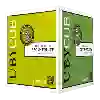
Domaine DuffourCôtes de Gascogne Blanc
This wine is a blend of 3 varietals which are the Colombard, the Gros Manseng and the Ugni blanc.
In the mouth this white wine is a with a nice freshness.
This wine generally goes well with poultry, lean fish or shellfish.
The Côtes de Gascogne Blanc of the Domaine Duffour is in the top 20 of wines of Côtes de Gascogne.
Taste structure of the Côtes de Gascogne Blanc from the Domaine Duffour
Light | Bold | |
Dry | Sweet | |
Soft | Acidic |
In the mouth the Côtes de Gascogne Blanc of Domaine Duffour in the region of Comté Tolosan is a with a nice freshness.
Wine flavors and olphactive analysis
On the nose the Côtes de Gascogne Blanc of Domaine Duffour in the region of Comté Tolosan often reveals types of flavors of pineapple, grapefruit or tropical and sometimes also flavors of citrus, apples or peach.
Food and wine pairings with Côtes de Gascogne Blanc
Pairings that work perfectly with Côtes de Gascogne Blanc
Original food and wine pairings with Côtes de Gascogne Blanc
The Côtes de Gascogne Blanc of Domaine Duffour matches generally quite well with dishes of shellfish, poultry or spicy food such as recipes of salt and pepper shrimp, sophie's tuna cake or chicken colombo (west indies).
Details and technical informations about Domaine Duffour's Côtes de Gascogne Blanc.
Discover the grape variety: Colombard
Colombard is one of the oldest grape varieties in the Charentes. This golden white grape variety is a cross between Chenin and Gouais. The young leaves of colombard are yellow with bronze patches. The adult leaves may be three-lobed or whole, depending on the variety. Its branches are cottony. The bunches of this variety are thick and cylindrical. Its elliptical berries are medium-sized. They change color until they ripen, ranging from greenish white to golden yellow. Colombard is associated with an average budding. It is particularly susceptible to leafhoppers, grape worms, mites, mildew, powdery mildew and gray mold. It is also sensitive to water stress, but is not very sensitive to wind. It ripens late in the second half of the year. There are a dozen approved clones of Colombard, the best known of which are 608, 607 and 606. This variety produces a full-bodied, fine white wine. Aromas of lime, nectarine, boxwood, citrus and exotic fruits are released.
Last vintages of this wine
The best vintages of Côtes de Gascogne Blanc from Domaine Duffour are 1982, 0, 2023, 2022 and 2021.
Informations about the Domaine Duffour
The Domaine Duffour is one of of the world's greatest estates. It offers 5 wines for sale in the of Côtes de Gascogne to come and discover on site or to buy online.
The wine region of Côtes de Gascogne
The wine region of Côtes de Gascogne is located in the region of Comté Tolosan of Vin de Pays of France. Wineries and vineyards like the Domaine Sichel or the Domaine Haut-Marin produce mainly wines white, red and sweet. The most planted grape varieties in the region of Côtes de Gascogne are Colombard, Gros Manseng and Merlot, they are then used in wines in blends or as a single variety. On the nose of Côtes de Gascogne often reveals types of flavors of red fruit, tangerine or jam and sometimes also flavors of watermelon, pomegranate or lemon grass.
The wine region of Comté Tolosan
Comte Tolosan is a PGI title that covers wines produced in a large area of Southwestern France. The PGI basin encompasses 12 administrative dePartments and is home to a wide range of appellations d'origine contrôlée (AOC) such as Jurançon, Cahors and Armagnac. The IGP label provides a geographical classification for wines that are not classified for AOC level appellations due to Grape variety or winemaking style. The region is part of the Aquitaine basin - the plains that lie between the Pyrenees, the Massif Central and the Atlantic Ocean to the west.
The word of the wine: Dress
Visual aspect of the wine. The colour is defined by its intensity, clarity, brilliance and colour, which indicate the level of evolution of the wine, thus giving an indication of its vintage.











